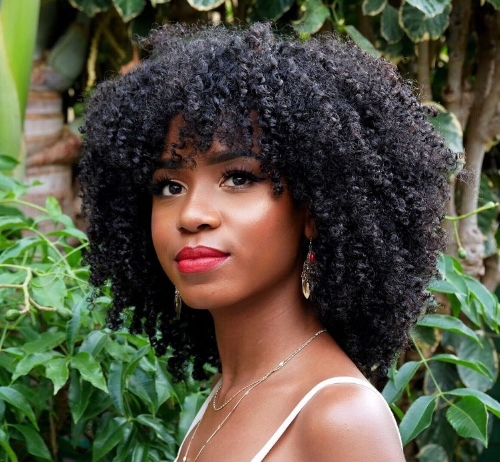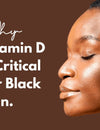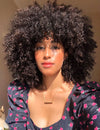
What's Your Hair Type? Do You Really Know...
You may have already heard of the hair classification system, which was devised by the celebrity hairstylist Andre Walker. This system focuses on straight hair (type 1) wavy hair (type 2), curly hair (type 3) and coily hair (type 4). These are then put into sub-categories ranging from A-C that is based upon the definition of the wave, curl or coil.
I am going to be looking at both type 3 and 4 categories as these hair types are associated more with people of colour because of the curls and coil patterns. I didn't know what my hair type classification was until I started researching so I am hoping that this short guide provides an insight as to how you can decode and understand your coils. You may also find that you overlap between the categories or subcategories as you may have a combination of hair types, which is normal.
Now Let's Get Scientific...
Everyone's hair focuses on two components, the follicle and shaft. The follicle is the part of the hair that sits within the skin or dermis of our scalp, and the shafts are the actual strands of hair that is visible on our heads. The number of disulfide bonds between the hair proteins found in the hair shaft determines how curly your hair is. Disulfide bonds are created when Keratin (a protein in our hair that grows from the follicle) and other proteins bond together. Curls are created if the protein bends; curlier hair has a greater number of links and straight hair has fewer links.

It is the shape of the hair follicle that determines our hair type and the way that the hair follicle is situated within the scalp. If the follicle has an angular shape in the dermis the hair will curve thus creating curly hair when it grows. Within the dermis, the sebaceous glands surround the follicle to create an oil called sebum which moisturises the hair. When the follicles are curved, the sebum isn't able to lubricate the full length of the hair leading the hair to become dry – this explains why the hair types with the tightest of coils are the most brittle as they are not exposed to enough sebum.
Type 3 Curly Hair
Type 3 curls have a definite S-Shape and can be full bodied. Without enough hydration or if you reside in a climate that is humid this hair type can be prone to frizz thus causing the curls to lack definition.

3A
Your curls are light and loose, and can be easily straightened or re-texturised.

3B
Your curls are a lot fuller than type 3A and look more like ringlets. This hair type is a lot more coarse and dense.

3C
Your curls are tighter and are referred to as corkscrew curls. This hair type is higher in density and coarseness than the two types above. Although these curls have the most volume, they experience the most shrinkage.
Hair Care Tip💡Use curl enhancing creams to tame your frizz and nourishing oils to help make your locks feel smoother and shinier. When washing, use sulphate free cleansers such as the Shea Moisture Coconut and Hibiscus Curl/Shine Shampoo which will define and maintain your natural curls.
Type 4 Kinky/Coily Hair:
Type 4 Kinky or Coily hair have the tightest of coils. The coils on this type can vary from a S-shape to a Z-Shape pattern. Without hydration, the hair will become dry and brittle resulting in breakage and split ends. Although it may be the most thickest of hair types, ironically it is the most delicate.

4A
Your coils still have an S-pattern when stretched like 3A hair but are tighter. Although this hair type can retain quite a bit of moisture, it is fragile and has a high density. If you use natural products such as Shea Butter for your wash n' go styles, you will get the most out of your twists as this hair type has a naturally defined curl pattern

4B
Your curls are light and loose, and can be easily straightened or re-texturised.

4C
Your hair is more tightly coiled than 4B, and has just as much density with more shrinkage and less definition. The coils have to be defined by braiding for example, as this hair type does not have a defined curl pattern.
Hair Care Tip💡 Avoid perms and harsh chemicals as this hair type is the most delicate. As it is susceptible to breakage, it needs to be moisturised from top to bottom. You will need to follow the LOC (Liquid, Oil, Cream) method which is described here on one of my earlier posts. Use Sulphate free cleansers to wash your hair, and then follow with a moisturising conditioner which will help detangle the hair and restore moisture. Protective styling techniques such as twists or braids prevent the hair from shedding encouraging it to grow.
I would say that my hair type classification is definitely in the type 4 category and possibly within the sub-category 4B. My hair is currently in box braids which is a protective styling technique, and based on this guide, my hair will be protected from damage and breakage as it tucked away from the harsh weather we have been having, so it will not dry out.
What hair type classification category do you fit into? Leave a comment below.

Contributor: Azania
Fashion, Beauty and Lifestyle Blogger.




